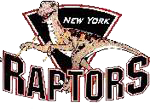
Conservation groups and environmentalists know that the “green revolution” necessary for a sustainable future is even more crucial following revelations about unstable and unsustainable water supplies. As a new level of environmental consciousness is embraced around the nation, it is reassuring to know that this magnificent country already offers us some simple solutions. Reflecting the existing philosophies and practices of Indigenous Australians, more and more gardeners are realising the benefits that can result from a garden full of native plants instead of introduced species. After all, Australia’s native plants are climate-compatible, water-efficient, hardy and unique to this nation, but above all else their great medicinal and pharmaceutical worth is indispensable.
Alarmingly, 5031 plant species are now at risk of extinction from loss of habitat, accounting for almost 25% of the world’s rare, endangered and threatened species. With such a vast array of fascinating and vibrantly coloured native plants, there are species to suit every backyard, with some offering even more than just beauty and sustainability. Cathy Hope, author of the new Wild Australia Guide: Native Plants, published this month by enthusiastic environmentalist Steve Parish, agrees that the benefits of native plants are something all households and communities should be aware of.
“Focusing on Australia’s sustainable future has given everybody the opportunity to become more aware of the advantages of native plants, as well as the myriad of other functions native plants can perform that might otherwise go unnoticed,” Hope, a long-time primary teacher and nature lover, enthuses.
Featuring Steve Parish’s spectacular photography, the guide not only helps identify numerous species of native flora but provides ecological essentials for the propagation and conservation of native plants. An added benefit is that the guide explores the many different ways native plants have been used by Indigenous Australians in food, as tools, and for medicinal purposes. For instance, Aborigines discovered not only that grass-trees provide nectar—a very high-energy food — but also that they are drought and bushfire resistant and have many other uses. Their “knife-like” leaves can cut meat, their flower stalks were lit to make torches and their hard-setting resin has been used in tool making. The mulla mulla plant is also drought resistant and its beautiful wildflowers have become a significant feature of the cut flower industry, but Aborigines used the flower to line cradle-sized coolamons, providing soft bedding for their babies, and an extract is now used in medical science to help treat skin cancer. Only a small percentage of Australia’s native plants have so far been studied for their potential medicinal and scientific applications, making saving threatened species even more important.
“I think it’s very important we acknowledge and understand every aspect of our sustainable environment,” Hope explains, “which means educating people about as much of our natural resources as possible”.
Another outstanding reference to complement the program and enhance the Wild Australia Guide library is Amazing Facts about Australian Native Plants, also written by Cathy Hope and released in September 2008. Cathy Hope will be appearing to sign both of her fantastic books at the Australian Garden in the Royal Botanic Gardens Cranbourne on Sunday 14 December from 11a.m. until 3 p.m. Both books are available from all good bookstores or visit www.steveparish.com.au to buy online.







